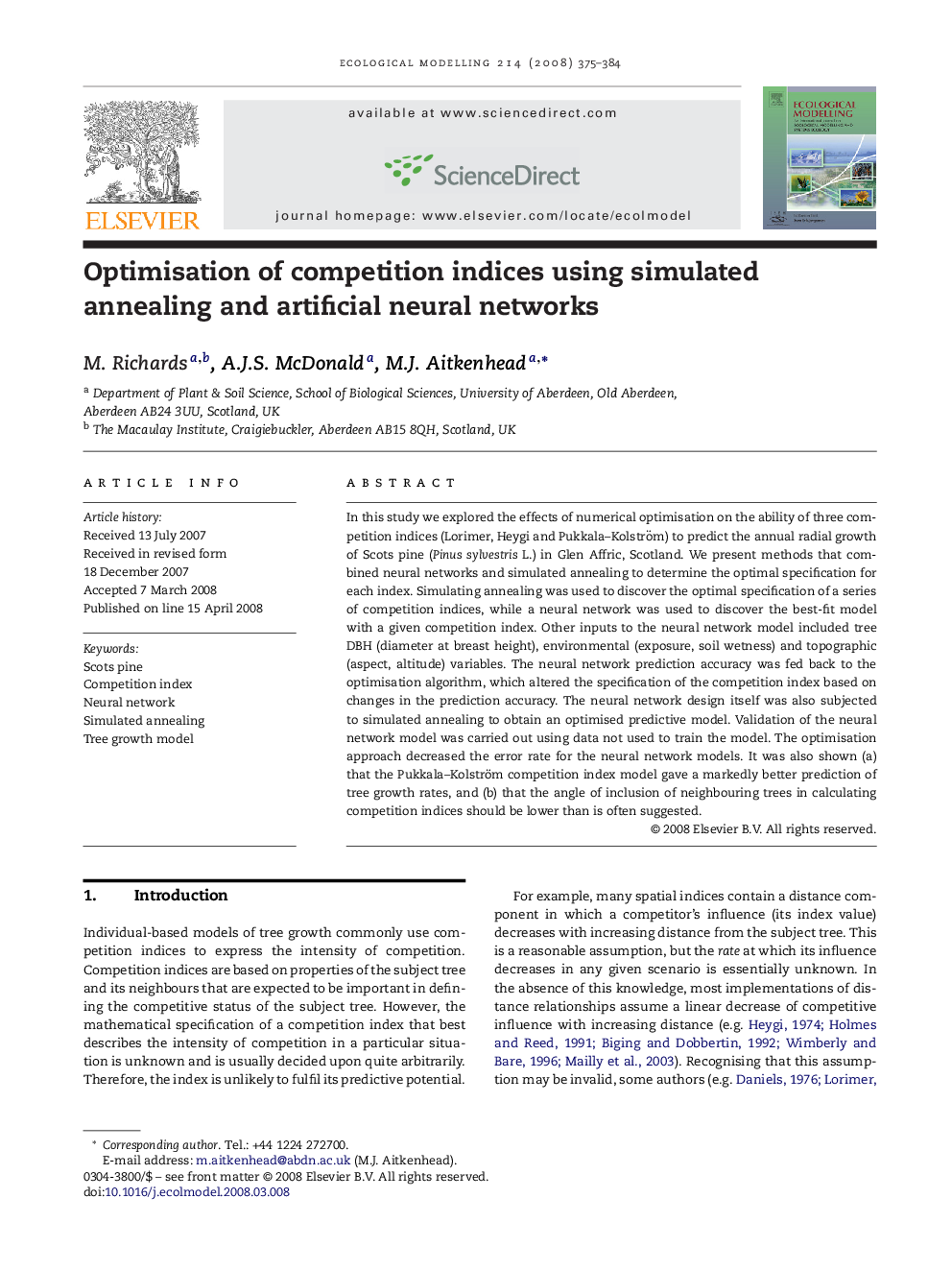| Article ID | Journal | Published Year | Pages | File Type |
|---|---|---|---|---|
| 4378179 | Ecological Modelling | 2008 | 10 Pages |
Abstract
In this study we explored the effects of numerical optimisation on the ability of three competition indices (Lorimer, Heygi and Pukkala-Kolström) to predict the annual radial growth of Scots pine (Pinus sylvestris L.) in Glen Affric, Scotland. We present methods that combined neural networks and simulated annealing to determine the optimal specification for each index. Simulating annealing was used to discover the optimal specification of a series of competition indices, while a neural network was used to discover the best-fit model with a given competition index. Other inputs to the neural network model included tree DBH (diameter at breast height), environmental (exposure, soil wetness) and topographic (aspect, altitude) variables. The neural network prediction accuracy was fed back to the optimisation algorithm, which altered the specification of the competition index based on changes in the prediction accuracy. The neural network design itself was also subjected to simulated annealing to obtain an optimised predictive model. Validation of the neural network model was carried out using data not used to train the model. The optimisation approach decreased the error rate for the neural network models. It was also shown (a) that the Pukkala-Kolström competition index model gave a markedly better prediction of tree growth rates, and (b) that the angle of inclusion of neighbouring trees in calculating competition indices should be lower than is often suggested.
Related Topics
Life Sciences
Agricultural and Biological Sciences
Ecology, Evolution, Behavior and Systematics
Authors
M. Richards, A.J.S. McDonald, M.J. Aitkenhead,
